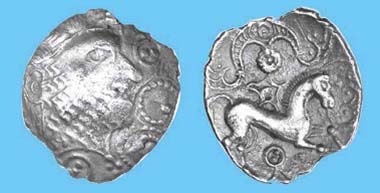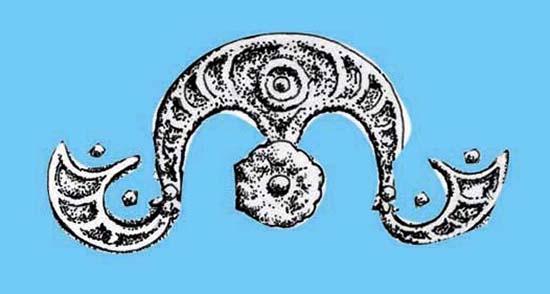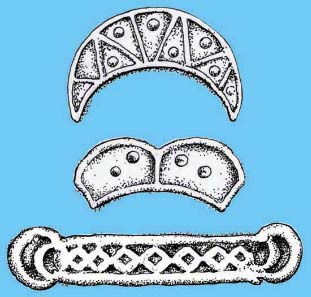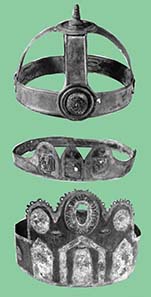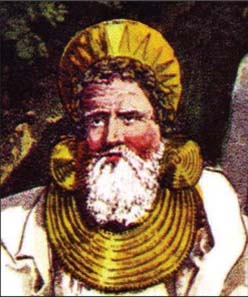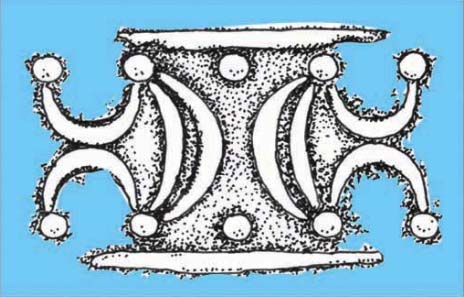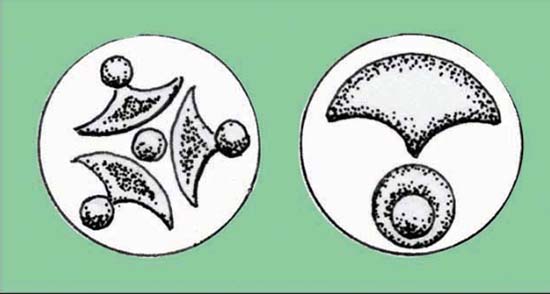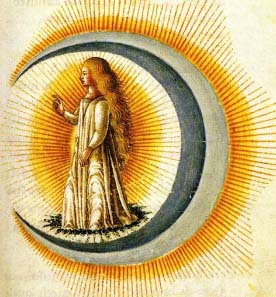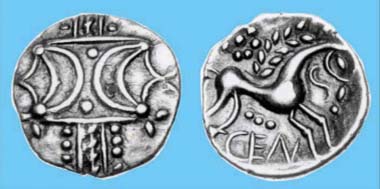by Chris Rudd
October 6, 2011 – On 20 September 2011 Carl’s Crown, a rare silver coin of the Iceni tribe – only one other recorded – was auctioned by Elizabeth Cottam in Aylsham, Norfolk, for GBP 5,200.
Carl’s Crown silver unit, c. 50-30 BC. Only one other recorded. Chris Rudd List 119, September 2011, no. 28, GBP 5,200. Source: Chris Rudd.
This may be small beer for a rare English silver crown of Charles I or II, but it’s the highest price ever paid for an ancient British silver coin. The previous record was for a silver coin of Tasciovanos, which Liz sold ten years ago for GBP 4,500.
“I’m over the moon” says Carl Everitt. “They even named the coin after me.” Source: Carl Everitt.
Carl’s Crown was found in 1994 by metal detectorist Carl Everitt at Ingoldisthorpe, north Norfolk, only a mile or so from Snettisham where the famous gold torcs were found in 1948, 1950 and 1990. Iceni kings and priests loved to flaunt their worldly wealth and spiritual power with costly crowns and torcs, right into Roman times.
Cusp-and-roundel moon-crown from Carl’s Crown. Worn by horse, king or druid? Or simply symbolic? Source: Jane Bottomley.
Carl’s Crown shows a cusp-and-roundel moon-crown above the horse. Was it an equine crown worn by a royal mare, perhaps a tooled leather cap with an enamelled solar ‘horse brass’ resting on the forehead? Was it a regal crown worn ceremonially by a Norfolk king? Was it a sacerdotal crown worn by an Iceni high priest, possibly a druid? Or was it purely symbolic?
Moon-crown and moon-diadem motifs from early gold and silver coins of the Iceni, c. 50-40 BC. Source: Jane Bottomley.
Whether real or imagined, the position of this cuspate moon-crown on the coin seems to say ‘the horse is sacred to us.’
Three of eight Iceni bronze crowns and diadems from Hockwold, Norfolk, and Cavenham, Suffolk, c. 2nd-4th century AD. Source: photos by Otto Fein © The Warburg Institute, from J.M.C. Toynbee, Art in Roman Britain, Phaidon Press 1962, pls. 139, 140, 141.
Moons, moon-crowns and knobbed neck torcs occur frequently on coins of the Iceni.
Gold lunulae, mainly Irish, date from the bronze age. Did Iceni gold torcs (also crescentic with solar terminals) fulfil a similar ritual function? Source: from S.R. Meyrick and C.H. Smith, The Costume of the Original Inhabitants of the British Islands, 1815.
Gold lunulae – moon shaped neck ornaments with solar terminals – date from the bronze age and were once associated with druids, albeit fancifully.
Uniting (silver) crescent moons with (gold) neck torcs on Iceni coins may imply a belief in the holy role of kings and queens or, at the very least, that moons and torcs were key icons of this tribe. Source: Jane Bottomley.
The cuspate form of Carl’s moon-crown appears to have been of special significance to the Iceni.
Cusp-and-roundel motifs, like Carl’s Crown, on Iceni linchpin terminals from Weeting and Tattersett, Norfolk, c. 1st century BC/AD. Source: Jane Bottomley.
It can be seen not only on Iceni coins, but also on Iceni horse-gear – specifically on terrets, strap-mounts and linchpin terminals. Indeed two Icenian linchpins carry a cusp-and-roundel motif that is similar to the cusp-and-roundel we see on Carl’s Crown. A coincidence? Maybe, but I think not.
In most ancient societies the moon was regarded as female and symbolic of fecundity. Source: from the wedding book Le nozze di Costantio Sforza e Camilla d’Aragona, 1480.
Carl’s Crown is an important ‘new’ type. It fully reveals for the first time what looks (to me) to be a novel style of regal or ritual crown – a cuspate crescent which is clearly connected to horses and which, in a simplified form, later becomes the dominant lunar motif on silver coins of the Iceni.
The cuspate moon-crown first seen on Carl’s Crown reappears decades later in a simpler, more stylised form on inscribed silver coins of the Iceni c. AD 10-43. Source: Chris Rudd.
Carl’s Crown demonstrates, yet again, that tribal symbols, which occur on coins often also turn up on other artefacts of the tribe, thus highlighting the unifying role of key images in a largely non-literate society.
by courtesy of Chris Rudd.
For more information on the expert of celtic coins, visit Chris Rudd’s website.




